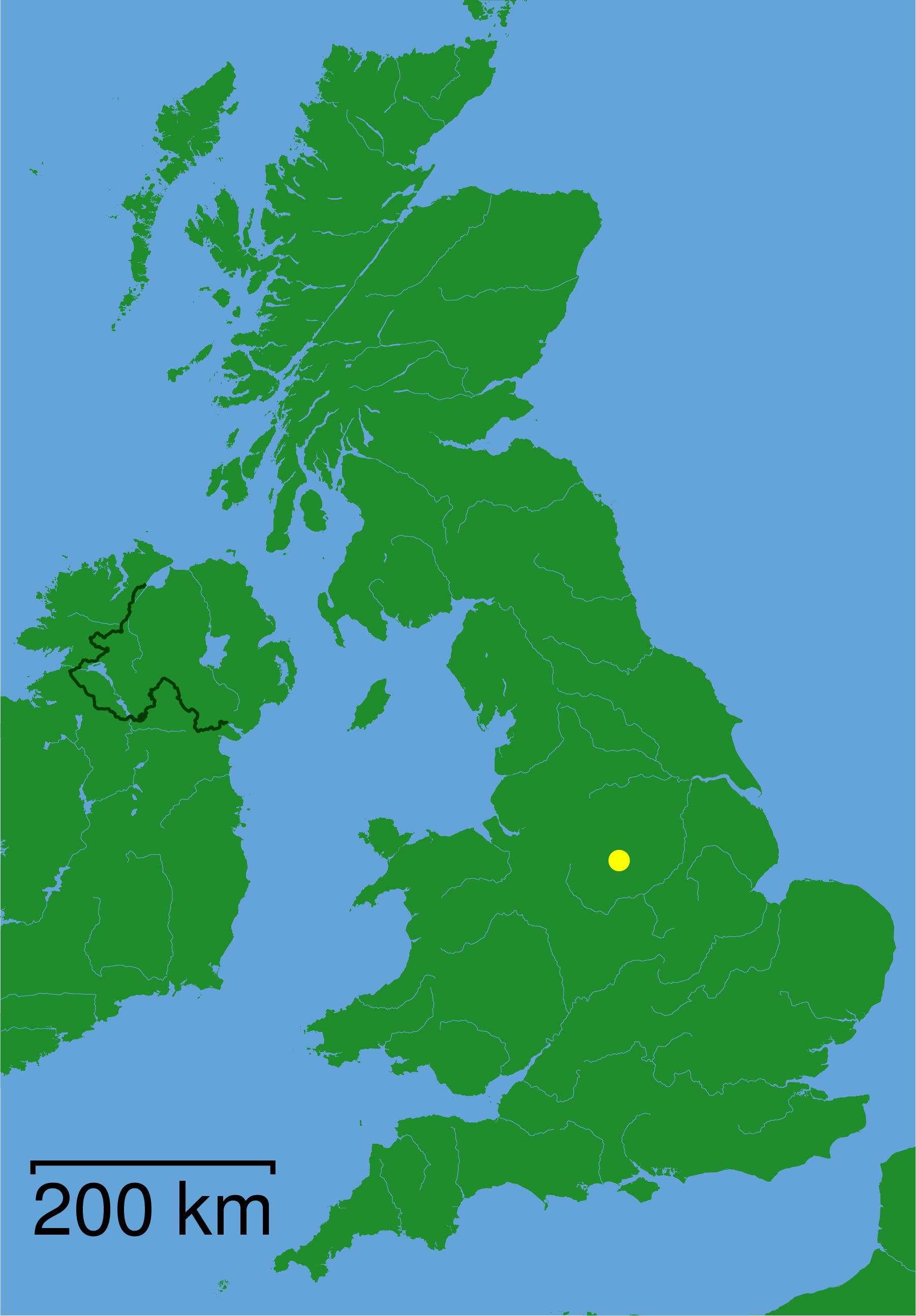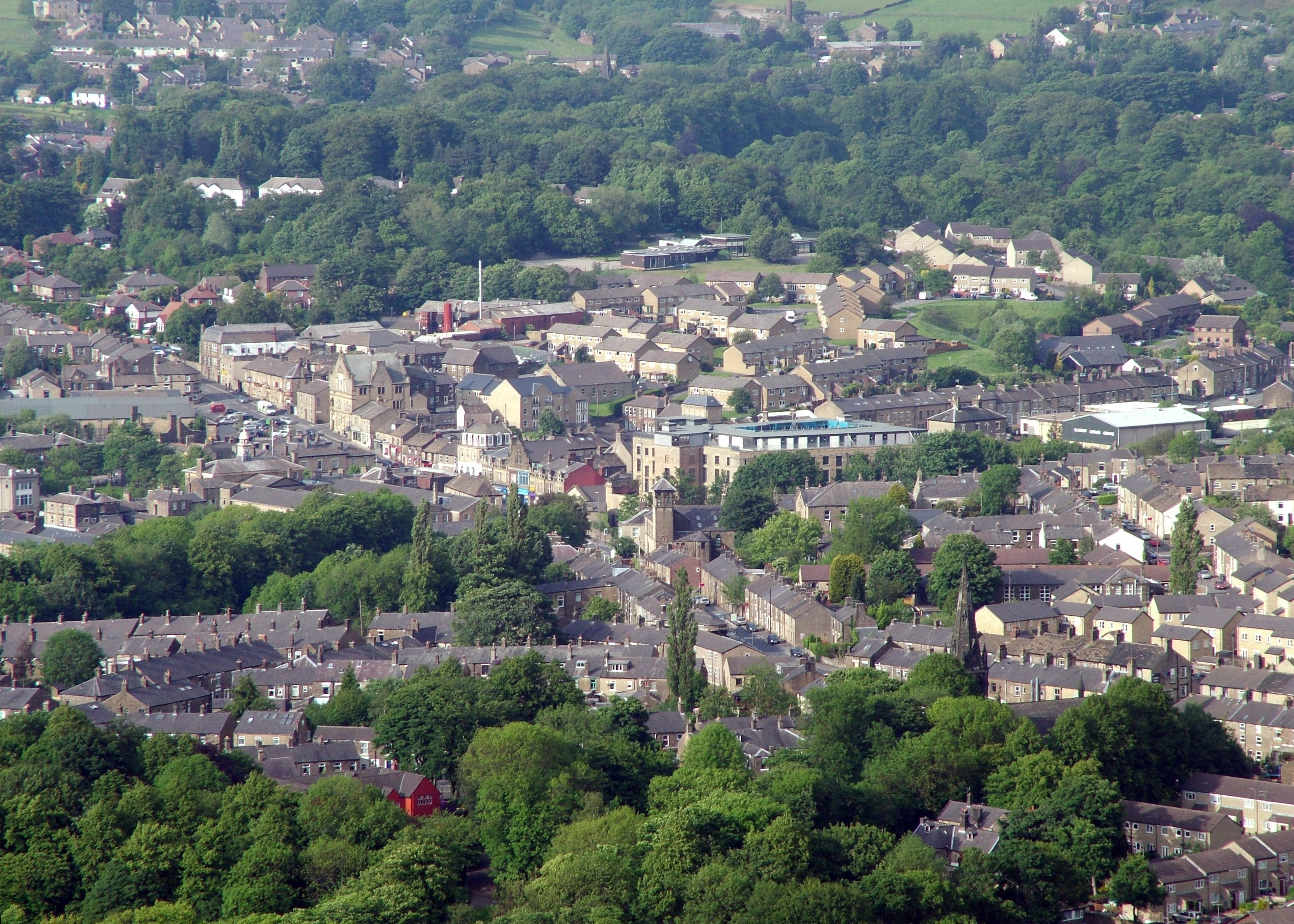|
Higher Buxton Railway Station
Higher Buxton railway station was opened in 1894 to the south east of Buxton, Derbyshire, on the LNWR line to Ashbourne and the south. It utilised part of the Cromford and High Peak Railway (which ran from Whaley Bridge to Cromford), joining it at Hindlow and proceeding to a branch to Ashbourne at Parsley Hay On leaving its bay at Buxton LNWR station, the line turned through a tight 180-degree curve southwards across a thirteen-arch skew viaduct high over the Midland line and Spring Gardens, with an uphill gradient of 1 in 62. The station was located next to Clifton Road, and between it and Dale Road was an extensive goods yard which had been opened in 1891 as part of the scheme to link Buxton with High Peak Junction near Cromford. Like all the stations on the line the platforms and buildings were of timber construction. On leaving the station, the line continued its climb across the thirteen arch Duke's Drive Viaduct on its way to thence to Beswick's Sidings, where the gr ... [...More Info...] [...Related Items...] OR: [Wikipedia] [Google] [Baidu] |
Buxton
Buxton is a spa town in the Borough of High Peak, Derbyshire, England. It is England's highest market town, sited at some above sea level."Buxton – in pictures" , BBC Radio Derby, March 2008, accessed 3 June 2013. also claims this, but lacks a regular market. It lies close to to the west and to the south, on the edge of the |
Parsley Hay
Parsley Hay railway station served Parsley Hay, a hamlet within Hartington Middle Quarter civil parish, about south east of Buxton, Derbyshire, on the LNWR line to Ashbourne. The nearest large settlement is the village of Hartington. History It was originally opened in 1833 for goods by the Cromford and High Peak Railway (which ran from Whaley Bridge to Cromford). It opened for passengers in 1856 but closed in 1877. The line was acquired by LNWR and extended to Buxton in 1894 and the station was reopened. In 1899 the LNWR built a junction just south of the station for a line to Ashbourne and built a new station. In common with the other stations on this line, the platforms and buildings were of timber construction. From this point on to Ashbourne the line was single with passing loops at the stations, though provision was made for doubling which never occurred.Bentley, J.M., Fox, G.K., (1997) Railways of the High Peak: Buxton to Ashbourne (Scenes From The Past series 32) ... [...More Info...] [...Related Items...] OR: [Wikipedia] [Google] [Baidu] |
Railway Stations In Great Britain Opened In 1894
Rail transport (also known as train transport) is a means of transport that transfers passengers and goods on wheeled vehicles running on rails, which are incorporated in tracks. In contrast to road transport, where the vehicles run on a prepared flat surface, rail vehicles (rolling stock) are directionally guided by the tracks on which they run. Tracks usually consist of steel rails, installed on sleepers (ties) set in ballast, on which the rolling stock, usually fitted with metal wheels, moves. Other variations are also possible, such as "slab track", in which the rails are fastened to a concrete foundation resting on a prepared subsurface. Rolling stock in a rail transport system generally encounters lower frictional resistance than rubber-tyred road vehicles, so passenger and freight cars (carriages and wagons) can be coupled into longer trains. The operation is carried out by a railway company, providing transport between train stations or freight customer faciliti ... [...More Info...] [...Related Items...] OR: [Wikipedia] [Google] [Baidu] |
Buildings And Structures In Buxton
A building, or edifice, is an enclosed structure with a roof and walls standing more or less permanently in one place, such as a house or factory (although there's also portable buildings). Buildings come in a variety of sizes, shapes, and functions, and have been adapted throughout history for a wide number of factors, from building materials available, to weather conditions, land prices, ground conditions, specific uses, prestige, and aesthetic reasons. To better understand the term ''building'' compare the list of nonbuilding structures. Buildings serve several societal needs – primarily as shelter from weather, security, living space, privacy, to store belongings, and to comfortably live and work. A building as a shelter represents a physical division of the human habitat (a place of comfort and safety) and the ''outside'' (a place that at times may be harsh and harmful). Ever since the first cave paintings, buildings have also become objects or canvasses of much artis ... [...More Info...] [...Related Items...] OR: [Wikipedia] [Google] [Baidu] |
Dowlow Works
Dowlow Works is a quarry in High Peak, Derbyshire near the village of Earl Sterndale. The quarry has been in operation since 1899, and has extracting permissions until 2046. It produces agricultural lime, crushed rock, white limestone and associated asphalt products. The works are situated close to the former Ashbourne Line and Cromford and High Peak Railway, which were closed in the 1950s and 1960s. There were once passenger and workmen trains that stopped at Dowlow Halt but in the 21st century, only a stub of the line from Buxton to Hurdlow remains in use. The rest of the line is now the High Peak Trail The High Peak Trail is a trail for walkers, cyclists and horse riders in the Peak District of England. Running from Dowlow , near Buxton, to High Peak Junction, Cromford , it follows the trackbed of the former Cromford and High Peak Rai .... References Quarries in England Mining in Derbyshire {{Derbyshire-geo-stub ... [...More Info...] [...Related Items...] OR: [Wikipedia] [Google] [Baidu] |
High Peak Junction
High Peak Junction, near Cromford, Derbyshire, England, is the name now used to describe the site where the former Cromford and High Peak Railway (C&HPR), whose workshops were located here, meets the Cromford Canal. It lies within Derwent Valley Mills World Heritage Site, designated in 2001, and today marks the southern end of the High Peak Trail, a trail for walkers, cyclists and horse riders. The Derwent Valley Heritage Way also passes this point, and popular walks lead from here along the towpath in both directions. History as part of the High Peak Railway As first built, the C&HPR – built to standard gauge proportions after initial plans for it to be constructed as a canal route – originally terminated at this location, named in the original Act as "beside the Cromford Canal, at or near to Cromford", where freight was transferred between canal barges and railway wagons. The large wharf-side transit shed, with awning over the canal, still stands on the west b ... [...More Info...] [...Related Items...] OR: [Wikipedia] [Google] [Baidu] |
Midland Railway
The Midland Railway (MR) was a railway company in the United Kingdom from 1844. The Midland was one of the largest railway companies in Britain in the early 20th century, and the largest employer in Derby, where it had its headquarters. It amalgamated with several other railways to create the London, Midland and Scottish Railway at grouping in 1922. The Midland had a large network of lines emanating from Derby, stretching to London St Pancras, Manchester, Carlisle, Birmingham, and the South West. It expanded as much through acquisitions as by building its own lines. It also operated ships from Heysham in Lancashire to Douglas and Belfast. A large amount of the Midland's infrastructure remains in use and visible, such as the Midland main line and the Settle–Carlisle line, and some of its railway hotels still bear the name '' Midland Hotel''. History Origins The Midland Railway originated from 1832 in Leicestershire / Nottinghamshire, with the purpose of serving the needs o ... [...More Info...] [...Related Items...] OR: [Wikipedia] [Google] [Baidu] |
Skew Arch
A skew arch (also known as an oblique arch) is a method of construction that enables an arch bridge to span an obstacle at some angle other than a right angle. This results in the faces of the arch not being perpendicular to its abutments and its plan view being a parallelogram, rather than the rectangle that is the plan view of a regular, or "square" arch. In the case of a masonry skew arch, the construction requires precise stonecutting, as the cuts do not form right angles, but once the principles were fully understood in the early 19th century, it became considerably easier and cheaper to build a skew arch of brick. The problem of building skew arch masonry bridges was addressed by a number of early civil engineers and mathematicians, including Giovanni Barbara (1726), William Chapman (1787), Benjamin Outram (1798), Peter Nicholson (1828), George Stephenson (1830), Edward Sang (1835), Charles Fox (1836), George W. Buck (1839) and William Froude (''c.'' 1844). History ... [...More Info...] [...Related Items...] OR: [Wikipedia] [Google] [Baidu] |
Buxton Railway Station
Buxton railway station serves the Peak District town of Buxton in Derbyshire, England. It is managed and served by Northern. The station is south east of Manchester Piccadilly and is the terminus of the Buxton Line. History Two railways arrived in Buxton almost simultaneously in 1863. The Stockport, Disley and Whaley Bridge Railway, heavily promoted by the London and North Western Railway (LNWR), built its line from Manchester to Whaley Bridge and extended it to Buxton. Meanwhile, the Midland Railway extended the Manchester, Buxton, Matlock and Midlands Junction Railway from Rowsley. When the Midland extended its main line to New Mills in 1867, to bypass the LNWR, Buxton became a branch line from Millers Dale. The two railways planned separate stations, but the town's leaders were concerned that the railway would damage the character of the place and requested that they be built side by side, and be in keeping with the existing architecture of the town. Consequently, the L ... [...More Info...] [...Related Items...] OR: [Wikipedia] [Google] [Baidu] |
Ashbourne Line
The Ashbourne line was a railway from Buxton via Ashbourne to Uttoxeter. It was built by the London and North Western Railway using a section of the Cromford and High Peak Railway (C&HPR) and it joined the North Staffordshire Railway at Ashbourne, proceeding to Uttoxeter with a junction onto the main line at Rocester. Origins Although the country between Buxton and Ashbourne was sparsely populated, and the terrain immensely difficult, there were a number of motivations for its construction. Ashbourne was one of the few large settlements in the area without a railway connection until the North Staffordshire Railway built its branch from the Churnet Valley line in 1852. Meanwhile, a lucrative trade in limestone was building up and the LNWR's only route southwards was through the Manchester area. Finally, and not least, the Midland Railway was threatening to take over the Derbyshire business through its attempts to reach Manchester from Derby via Buxton. The LNWR sought to con ... [...More Info...] [...Related Items...] OR: [Wikipedia] [Google] [Baidu] |
High Peak (borough)
High Peak is a local government district with borough status in Derbyshire, England. The borough compromises high moorland plateau in the Dark Peak area of the Peak District National Park. The district stretches from Holme Moss in the north to Sterndale Moor in the south, and from Hague Bar in the west to Bamford in the east. The population of the borough taken at the 2011 Census was 90,892. The borough is unusual in having two administrative centres for its council, High Peak Borough Council; the offices are based in both Buxton and Glossop. The borough also contains other towns including Chapel-en-le-Frith, Hadfield, New Mills and Whaley Bridge. High Peak was the name of a hundred of the ancient county of Derbyshire covering roughly the same area as the current district. It may have derived its name from the ancient Forest of High Peak, a royal hunting reserve administered by William Peverel, a favourite of William I, who was based at Peak Castle. High Peak contains muc ... [...More Info...] [...Related Items...] OR: [Wikipedia] [Google] [Baidu] |








